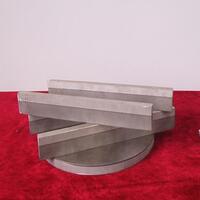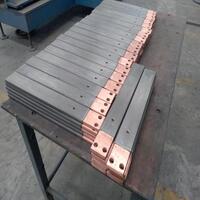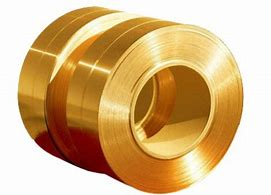1. Introduction
Metal clad exteriors have surged in popularity thanks to their sleek aesthetics, durability, and low maintenance. Whether you’re building a modern metal clad house or upgrading an existing structure with a corrugated steel facade or vertical standing seam metal siding, knowing how to properly install and care for your system is crucial. In this guide, we’ll break down the step-by-step process for installing and maintaining metal clad walls—covering everything from material selection to long-term upkeep.

2. Choosing the Right Metal Clad Type
Not all clad metals are created equal. Your choice depends on climate, budget, and design goals.
- Corten steel siding offers a rustic, weathered look and develops a protective rust layer over time—but check corten siding cost before committing, as it can be pricier than alternatives.
- Zinc metal siding and zinc clad dormers provide a clean, modern finish with excellent corrosion resistance.
- Copper siding ages gracefully into a green patina and is ideal for high-end projects.
- Aluminum clad steel or aluminum clad sheet options are lightweight and resist rust, making them great for coastal areas.
- For industrial or agricultural uses, exterior corrugated metal siding or a metal clad shed built with boiler plate steel may be more practical.
Always verify the clad metal meaning: it refers to a composite material where a base metal (like mild steel plate) is bonded with a corrosion-resistant layer (like stainless steel or zinc).
3. Preparing the Wall Substrate
Before installing any metal clad wall, ensure your substrate is structurally sound, level, and moisture-resistant.
Install a high-quality weather-resistive barrier (WRB) over sheathing to prevent water intrusion. For steel clad buildings, use furring strips to create an air gap—this improves ventilation and reduces condensation behind the cladding.
Mark stud locations and verify alignment. Misaligned framing can lead to uneven panel installation or stress points that compromise the metal facade over time.
4. Installing Metal Clad Siding or Facade Panels

4.1. Cutting and Handling Materials
Use proper tools like metal sheet cutting shears or a circular saw with a metal-cutting blade. Wear gloves—edges on stainless steel plate or aluminum diamond tread plate can be sharp.
For precision, pre-cut panels on the ground before lifting them into place. Avoid dragging clad metals across rough surfaces to prevent scratches on finishes like Colorbond standing seam or PAC Clad HWP.
4.2. Fastening Techniques
Use corrosion-resistant fasteners compatible with your cladding material—e.g., stainless steel screws for a stainless clad aluminum system or aluminum-clad stainless steel setup.
For vertical standing seam metal siding or standing seam facade systems, follow manufacturer specs for clip spacing and panel overlap. PAC Clad coping and column covers often require specialized flashing details.
Never over-tighten fasteners—this can deform panels or restrict thermal expansion, leading to buckling in hot weather.
5. Sealing and Flashing Critical Areas

Water management is key to a long-lasting metal clad building. Pay special attention to:
- Window and door perimeters: Use compatible sealants and metal weatherboard trim.
- Roof-wall intersections: Integrate PAC Clad standing seam roof panels with wall cladding using proper transition flashing.
- Penetrations: Seal around vents, pipes, or aluminum clad pipe insulation with flexible, UV-resistant sealants.
6. Common Problems and Solutions
6.1. Corrosion or Staining
Even clad metals can corrode if dissimilar metals contact (e.g., copper near aluminum). Use isolation tapes or gaskets to prevent galvanic corrosion.
For zinc nickel alloy or electroplated surfaces showing white rust, rinse with clean water and allow to dry—avoid abrasive cleaners.
6.2. Oil Canning (Wavy Appearance)
This visual distortion in large flat panels is common with thin-gauge steel. Minimize it by using stiffer alloys (like 6061 T6 aluminum plate), adding stiffeners, or choosing textured finishes like diamond plate steel.
6.3. Noise During Rain or Wind
Add insulation behind the cladding—metal clad insulation with a vapor barrier reduces sound transmission and improves energy efficiency.
7. Maintenance Tips for Longevity
Inspect your metal clad wall annually for loose fasteners, damaged seams, or sealant failure.
Clean gently with mild soap and water. Avoid pressure washers on delicate finishes like copper or corten steel plate.
For engraved brass plates or metal nameplates on the facade, use non-abrasive cloths to preserve detail.
8. Conclusion
Installing and maintaining a metal clad exterior doesn’t have to be complicated—with the right materials, techniques, and ongoing care, your steel facade, zinc clad roof, or aluminum clad steel wall can last 50+ years. Whether you’re building a steel clad house or retrofitting a commercial metal clad building, prioritize compatibility, proper flashing, and regular inspections to maximize performance and curb appeal.
Our Website founded on October 17, 2012, is a high-tech enterprise committed to the research and development, production, processing, sales and technical services of ceramic relative materials such as How. Our products includes but not limited to Boron Carbide Ceramic Products, Boron Nitride Ceramic Products, Silicon Carbide Ceramic Products, Silicon Nitride Ceramic Products, Zirconium Dioxide Ceramic Products, etc. If you are interested, please feel free to contact us.
